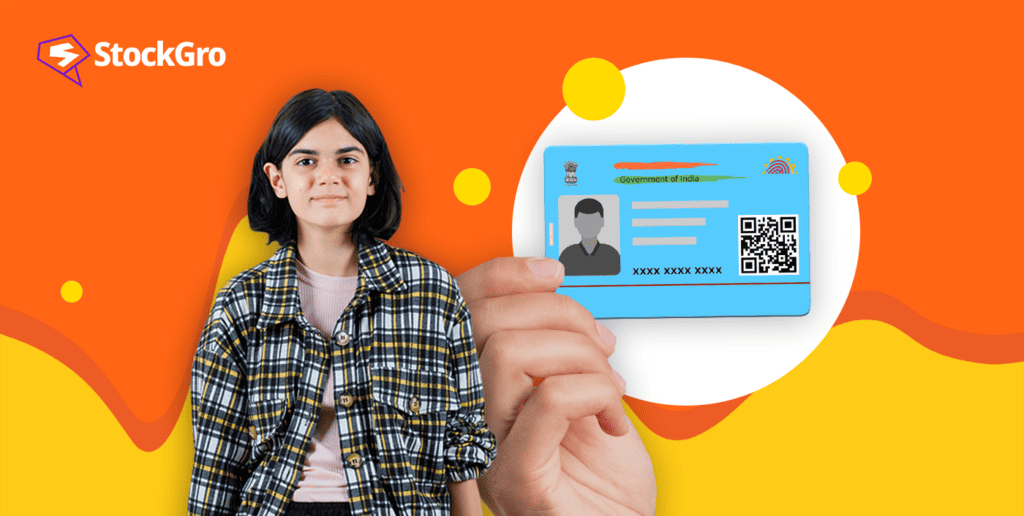
The Aadhaar card is one of the fundamental documents for Indian citizens to show their identity. As the term suggests, the Aadhaar acts as the base or foundation for all other government-related documents and transactions.
As of February 2024, 139 crore Indian citizens have Aadhaar cards. Holding an Aadhaar is voluntary and the government does not mandate it. However, the number of Aadhaar cards registered so far is proof enough to show its importance and benefits.
An Aadhaar card is beneficial for every citizen, irrespective of caste, religion, age or gender. Today’s article discusses a special kind of Aadhar card for young children – The blue Aadhar card.
Aadhar card in India
It was in 2009 that the Indian Government decided to create a database having identification details of all its citizens. UIDAI – Unique Identification Authority of India, a statutory body, was created for the same purpose.
The objective of this authority is to provide citizens with a unique identification that can be accessed anywhere, electronically.
The Aadhaar card contains biometric information like the fingerprint and the demographic details of the holder, such as the name, date of birth, address, etc. Every Aadhaar registration has a unique 12-digit number attached, called the UIDAI ID, through which the holder’s details can be accessed.
Also read: The UIDAI has released new rules for Aadhaar updates. Check them out here!
Aadhaar acts as a valid identification and address proof, making it one of the most sought-after government documents.
What is UIDAI’s blue-coloured new Aadhaar card?
Blue Aadhaar, also called the Baal Aadhaar, is a type of Aadhaar card specifically meant for children less than five years of age.
The standard Aadhaar card for adults is white. The Baal Aadhaar is made in blue to distinguish it from the usual one. The main distinction between the two cards, besides the colour, is the biometric information. It may or may not be possible to capture accurate biometrics for young children; hence, the blue Aadhaar facilitates registration without the biometric.
Documents such as the birth certificate or ID cards from schools support the blue Aadhaar. It contains the child’s name, date of birth and photograph, along with linking the Aadhaar number to one of the parent’s Aadhaar number.
Most parents might neglect getting an Aadhaar registration for their children or may postpone it until their children are older. However, getting an Aadhaar registration soon after the child is born, helps the family access various government-related schemes and benefits.
Also read: PMRY: Guide to the central government loan scheme for unemployed youth
Features of blue Aadhaar
- The Aadhaar is blue, unlike the usual white coloured Aadhaar card.
- The blue Aadhaar card will not contain the biometric information of the holder.
- Applying for a blue Aadhaar card does not have any fees associated. UIDAI issues it for free.
- Every child holding a blue Aadhaar must get the biometric updated after turning five years old. Otherwise, the Aadhaar will be invalid and will require a fresh registration.
- Like the usual Aadhaar card update, the blue Aadhaar biometric should be updated for the second time when the child turns 15 (10 years once).
How to apply for blue Aadhaar?
To apply for a blue Aadhaar, one must make an appointment with the Aadhaar enrolment centre. This can be done through the official portal of UIDAI, by entering the child’s and parents’ details. Alternatively, one can make an appointment by directly walking into the enrolment centres. Applicants can choose the centre and slot as per the time availability and their convenience.
- Step 1: Parents to visit the Aadhaar enrolment centre with the child.
- Step 2: Carry essential documents, including the parents’ Aadhaar card and the child’s birth certificate for registration.
- Step 3: Representatives at the enrolment centre collect the parents’ Aadhaar and the child’s demographic details.
- Step 4: Once the documents and details are ready, the respective authority will begin the verification process.
- Step 5: Upon successful verification, the Aadhaar will be issued and sent by post to the applicant’s address. Alternatively, the e-Aadhaar can be downloaded online. While e-Aadhaar will be available in a few weeks, the physical copy will be delivered within 60 days.
To update the Aadhaar with biometrics after the child turns 5, parents must physically visit the enrolment centre with the child. Biometrics like fingerprint and iris are then captured and added to the existing database against the Aadhaar number.
Also read: Government bonds in India – Meaning, types and features
Bottomline
Though not mandated by the government, Aadhaar registration is one of the basic documents that every citizen is recommended to have. Holding an Aadhaar registration is the first step for further documents like a passport, PAN, etc.
Having an Aadhaar for children is equally essential as it is for adults. It makes the process of availing government benefits easier. Without the requirement of biometrics, Aadhaar registration for children is simple today. Hence, it is suggested that every parent goes through the details of blue Aadhaar and gets their kid enrolled.

